Birds with long legs are a fascinating group of animals that have adapted to their specific environments in unique ways. Their long legs enable them to wade through shallow water, walk through tall grasses, and run at high speeds.
These long-legged birds come in a variety of sizes and shapes, from small egrets to large ostriches. Some of these birds, such as flamingos and pelicans, are known for their distinctive appearances, while others are more inconspicuous.
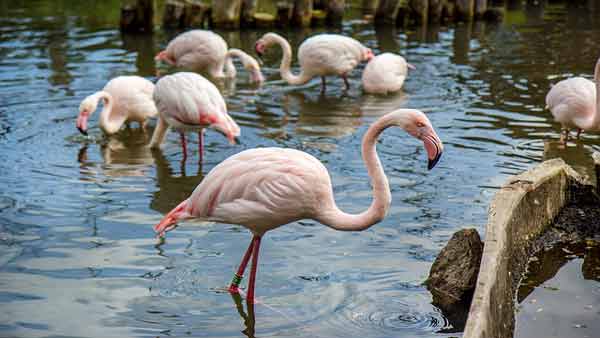
Despite their differences, all long-legged birds share an important characteristic: their long and powerful legs play a crucial role in their survival. In this regard, they serve as a reminder of the incredible diversity and adaptability of the natural world.
So here in this article, we have shared a list of 10 amazing birds with long legs with pictures that you must take a look at.
Let’s have a look at the long-legged birds:
10 Amazing Birds with Long Legs
1. Wood Sandpiper
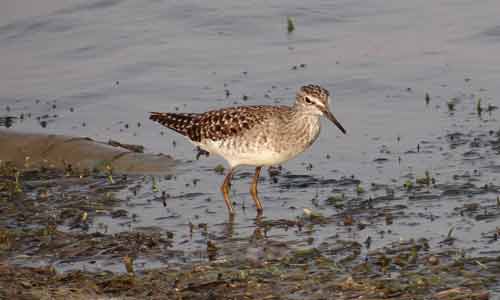
The Wood Sandpiper is a small endangered bird that belongs to the Scolopacidae family. They have relatively long legs. Wood sandpiper birds are relatively small to medium-sized birds with long pointed bills.
The Wood Sandpiper has a greyish-brown head, neck, and breast and a striped brown back. Their wings are greyish-brown-white with a scaly pattern, and the tail is barred with dark bars.
Habitat:–
Wood sandpiper birds are found in a variety of wetland habitats, including marshes, ponds, lakes, and rivers.
Food:–
The food of wood sandpipers mainly consists of small invertebrates, such as worms, insects, midges, and crustaceans.
2. Cattle Egret
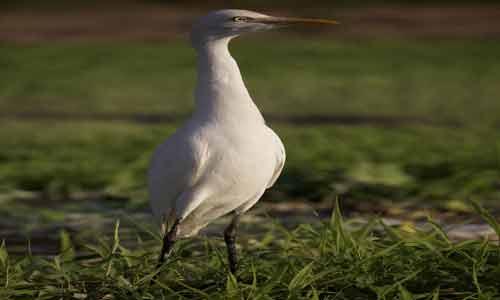
The Cattle Egret is a member of the heron family that is widely found in Asia, Africa, Australia, and Europe. It has primarily white plumage and a thick, straight bright yellow bill.
Habitat:–
The cattle egret is found in a variety of habitats such as marshes, grasslands, wetlands, lakes, reservoirs, and even urban areas.
Food:–
The diet of cattle egrets consists mainly of insects, frogs, lizards, small mammals and small fish, and aquatic invertebrates.
3. Grey Heron
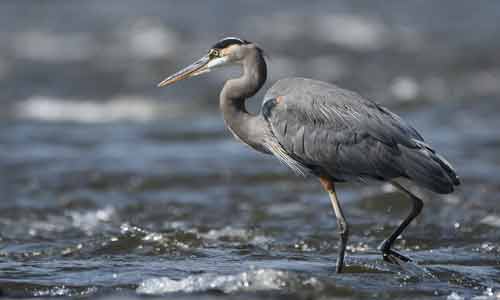
The Grey Heron is a long-legged wading bird that is widely spread throughout Europe, Asia, and parts of Africa.
Habitat:–
They are mostly found around lakes, large and small rivers, reservoirs, ponds, swamps, flooded areas, and seashores.
Food:–
Grey herons feed mainly on aquatic animals including insects, fish, amphibians, and crustaceans that they catch near the water or standing still or chasing their prey through the shallows.
4. Flamingo
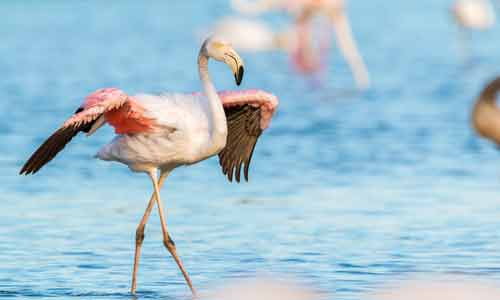
Another long-legged bird on our list is the flamingo. Flamingos are commonly found in tropical and subtropical regions, particularly in Africa, South America, and the Caribbean. They are known for their pink plumage and long and thin legs.
Habitat:-
Flamingo birds are found in shallows, brackish or saline wetlands such as lagoons, estuaries, and alkaline lakes.
Food:-
The diet of Flamingos mainly consists of fishes, algae, molluscs, shrimp crustaceans, and other invertebrates.
5. Black Stork
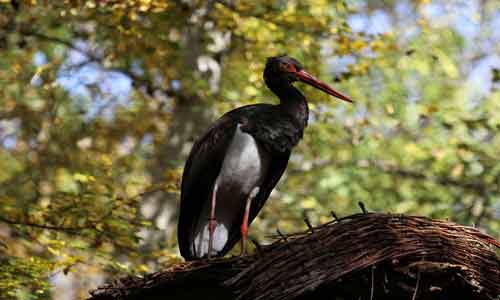
The black stork is a large bird that belongs to the Ciconiidae family. The black stork is commonly found in forests, near rivers and wetlands, and is spread across Europe and Asia region.
Habitat:-
Black storks are found near ponds, estuaries, rivers, lakes, and wetlands.
Food:–
Black storks are carnivores and feed mainly on aquatic animals, small mammals, amphibians, crabs, snails, fish, and insects.
6. Scarlet Ibis
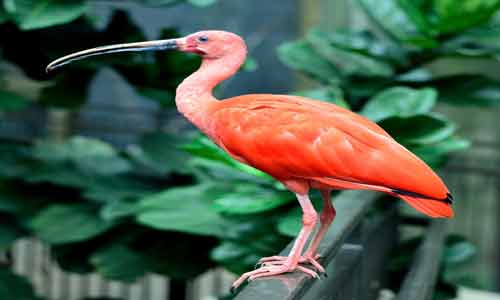
The Scarlet Ibis is a bird species found in tropical South America and some parts of the Caribbean islands. They are popular for their attractive and vibrant red-pink plumage.
Habitat:-
The Scarlet Ibis is found in various types of wetland habitats, including mangrove swamps, shallow lagoons, mudflats, and freshwater marshes.
Food:-
Scarlet Ibis birds are omnivorous and feed on a variety of small animals and plants, including insects, small fish, and crustaceans.
7. Emu

The emu is the second-largest living bird in the world after the ostrich. Their soft, brownish-grey feathers and long, strong legs with three-toed feet are adapted for running.
Habitat:-
Emu is highly adaptable and can live in a variety of habitats, including forests, savannas, grasslands, scrublands, and open plains.
Food:-
Emus are omnivorous and their diet consists of a variety of plants and animals such as flowers, seeds, fruits, roots, insects, caterpillars as well as small vertebrates.
8. Roseate Spoonbill
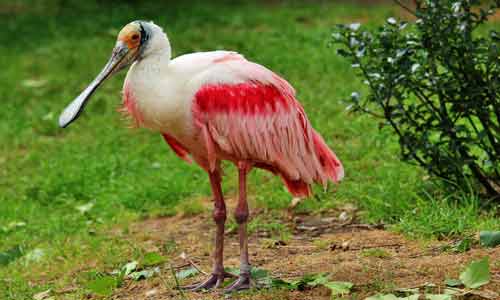
The Roseate Spoonbill is an endangered bird with mainly pinkish-white plumage, a long curved bill, bluish-grey back feathers, and long legs. They are mainly found in parts of the Americas, including the southern United States, Mexico, Central America, and parts of South America.
Habitat:-
The Roseate Spoonbill inhabits a variety of wetland habitats including freshwater marshes, saltwater marshes, and mangrove swamps.
Food:-
Roseate spoonbill feed mainly on aquatic animals such as fish, crustaceans, and insects. Their diet can vary depending on their location and the season.
9. Sandhill Crane
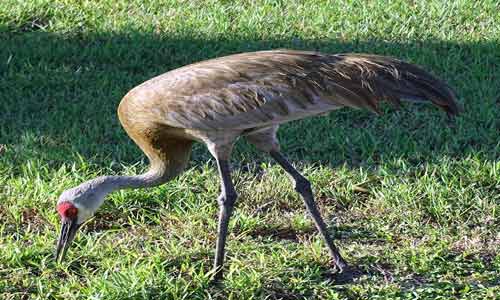
The Sandhill Crane is a species of large, long-legged bird that belongs to the family Gruidae. They are native to North America and are one of the most abundant crane species in the world. They are generally gray in color, with a bright red patch on their foreheads. They have long, thin necks and legs,
Habitat:-
Sandhill cranes are found in wetlands, grasslands, and agricultural areas. They are especially associated with open areas where they can eat a wide variety of plants and insects.
Food:-
Sandhill cranes are omnivorous and their diet includes a variety of plants, insects, small mammals, and other birds.
10. Purple Gallinule
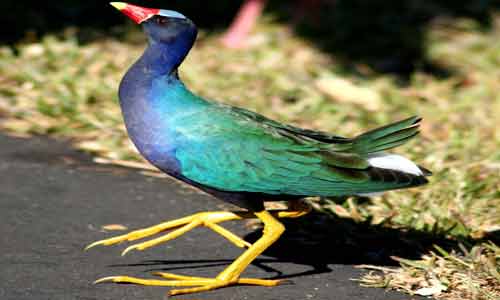
The Purple Gallinule is a medium-sized bright color bird that belongs to the rail family. They are found in wetlands and swamps throughout the Americas, from the southern United States to northern Argentina.
Habitat:-
Purple Gallinule birds are found in wetland habitats such as swamps, marshes, and freshwater ponds.
Food:-
The diet of the purple gallinule bird consists mainly of plant material such as seeds, fruits, and leaves, as well as animals such as insects, spiders, and other invertebrates. They may also eat small frogs, tadpoles, and fish.
Conclusion
We hope that in this article you get to learn about these amazing birds with long legs. All in all, long-legged birds are an amazing group of creatures. They have special unique adaptations and skills necessary for their survival in the environment.
If you have any queries related to this amazing long-legged bird please let us know in the comment section below.
Also Read:-
- Top 10 Birds with Long Beaks (With Pictures)
- 7 Best Pet Birds That Talk for Beginners
- 11 Animals with Big Heads ( With Pictures)
- 15 Beautiful White Birds Species (With Pictures)
- 15 Beautiful Birds With Red Heads (With Pictures)